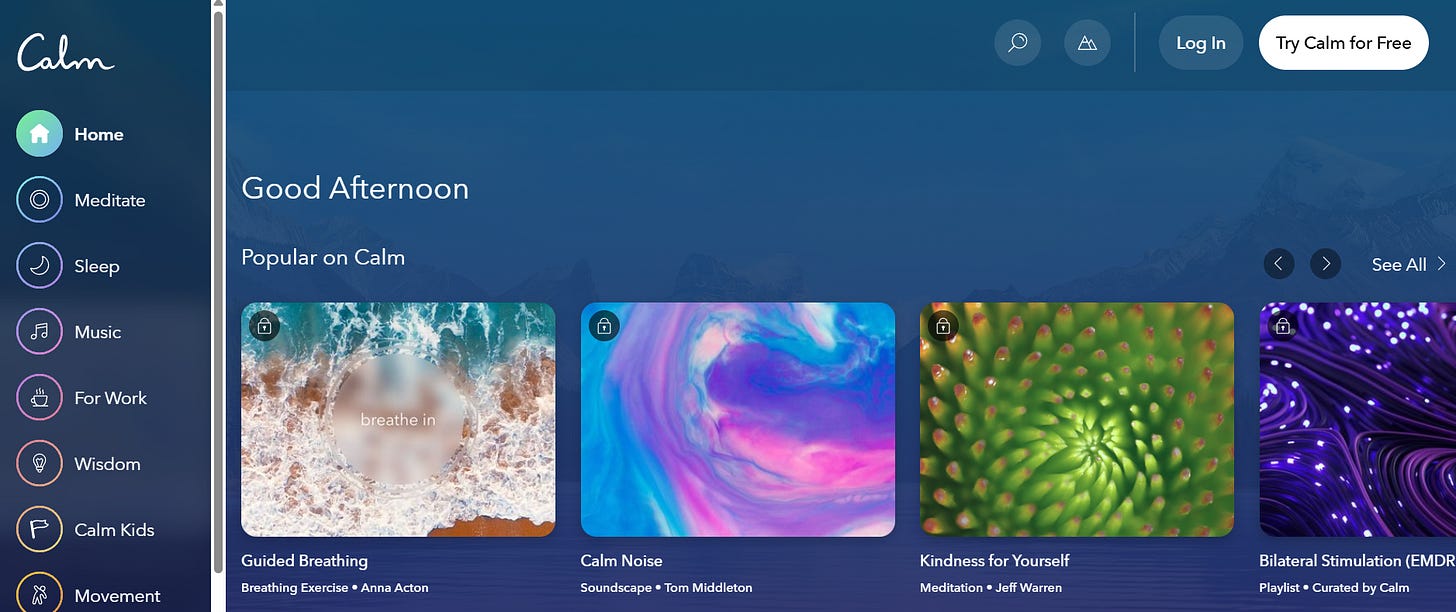How Calm Tripled Retention by Asking at the Right Moment
When you ask can be as important as what you ask
For over 20 years, I've worked with Fortune 500 companies and startups to help them build better customer engagement, acquisition and retention strategies. Every issue of Backstage Pass pulls back the curtain and shares what I've learned, and teaches you how to apply these same concepts to grow your own Substack into a sustainable business.
Note: At the end of this article, I'm sharing 5 specific tactics you can implement this week to dramatically improve your newsletter retention by timing your engagement requests strategically. These require no budget or special tools, just a better understanding of subscriber psychology.
The Problem Most Newsletter Writers Don't Even Know They Have
Here’s a key question you probably haven’t considered: When do you ask your readers to engage with your content?
If you’re like most Substack writers, you probably put your calls-to-action at the end of your posts. Maybe you ask people to comment, share, or reply after they’ve already consumed all your content. It feels logical, right? Give them the value first, then ask for engagement.
But what if I told you this approach is quietly hurting your retention rates? What if when you ask for engagement matters even more than what you ask for?
That’s exactly what the team at Calm, the meditation app valued at over $2 billion, discovered when they analyzed their user data. And the insight applies directly to newsletter writers who want more loyal, engaged subscribers.
The $2 Billion Meditation App That Cracked the Code on Engagement
Calm isn’t just another meditation app. With almost $600 million in revenue, they’ve built one of the most successful subscription businesses in the world. But one of their most important breakthroughs came from a small, overlooked feature: daily reminders.
Originally, this feature was buried in the app’s settings menu, and adoption was almost nonexistent—fewer than 1% of users ever set one. It seemed like a failed experiment.
Then Calm’s team decided to take a closer look at the numbers. Using behavioral analytics, they discovered that users who did set daily reminders had nearly 3× higher retention than those who didn’t.
That finding was too powerful to ignore.

The Experiment That Changed Everything
Calm wanted to know: Was this just correlation (power users would have stuck around anyway), or was the reminder feature causing higher retention?
So they ran an experiment. Instead of leaving the reminder hidden in settings, they prompted new users to set a reminder immediately after their first meditation session.
The timing was key. Right when users were feeling calm, accomplished, and grateful for the session, Calm asked them to make a small commitment.
The results? Staggering. About 40% of new users who saw the prompt set a daily reminder, compared to under 1% who found it on their own. And those users showed the same 3× retention boost.
By asking at the right psychological moment, Calm transformed a forgotten feature into one of their most powerful retention drivers.
The Fatal Timing Mistake Most Newsletter Writers Make
Now let's talk about how this applies to your newsletter. Most Substack writers are making the exact same mistake Calm made initially, they're asking for engagement at the wrong psychological moment.


